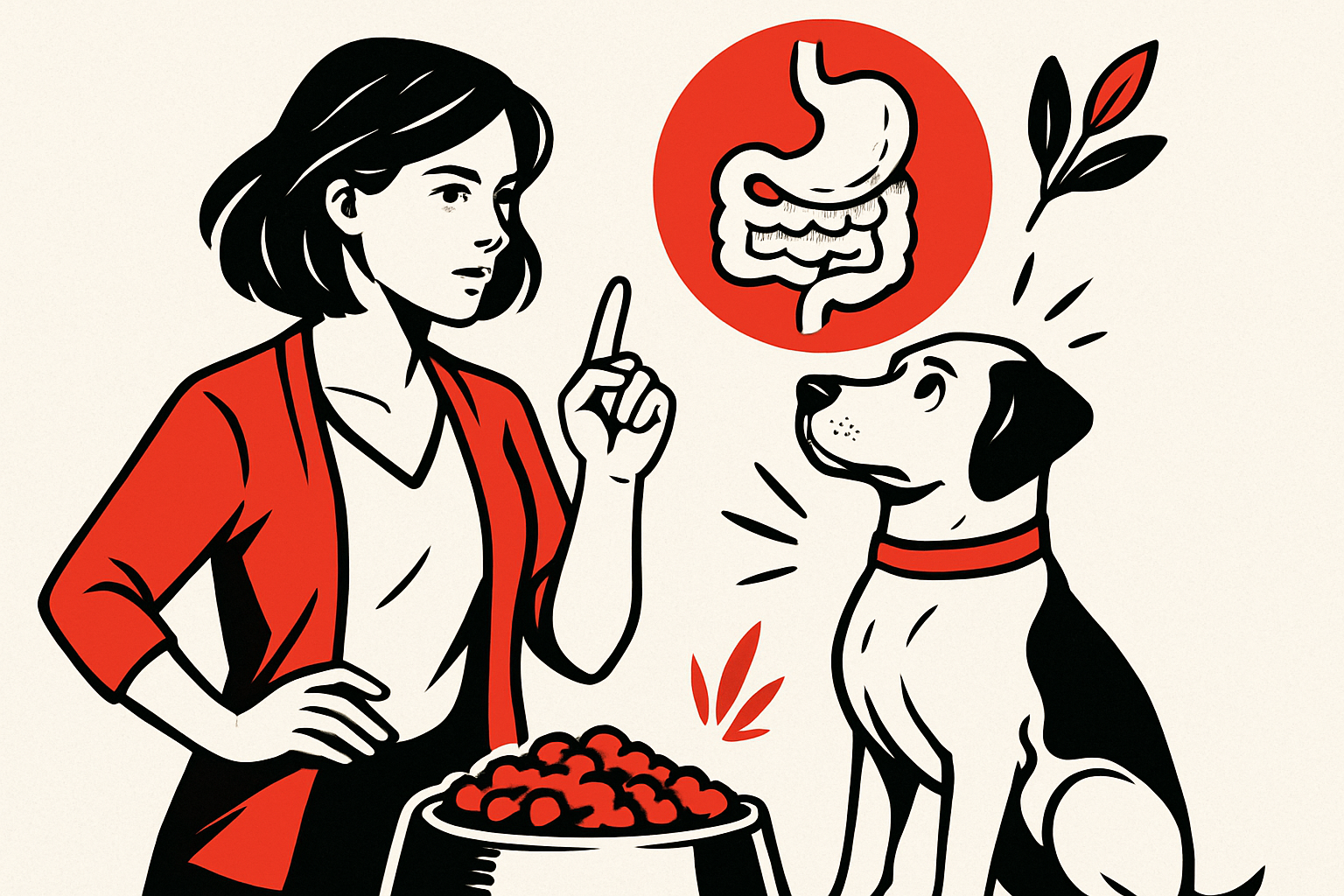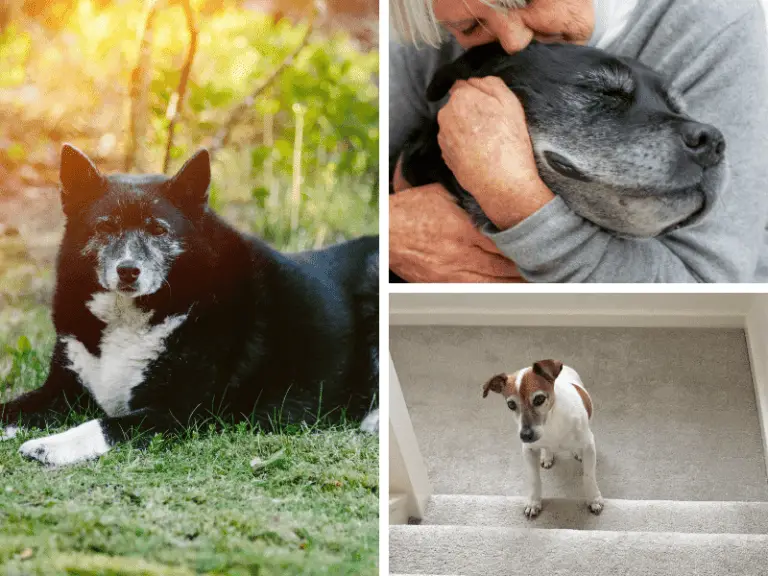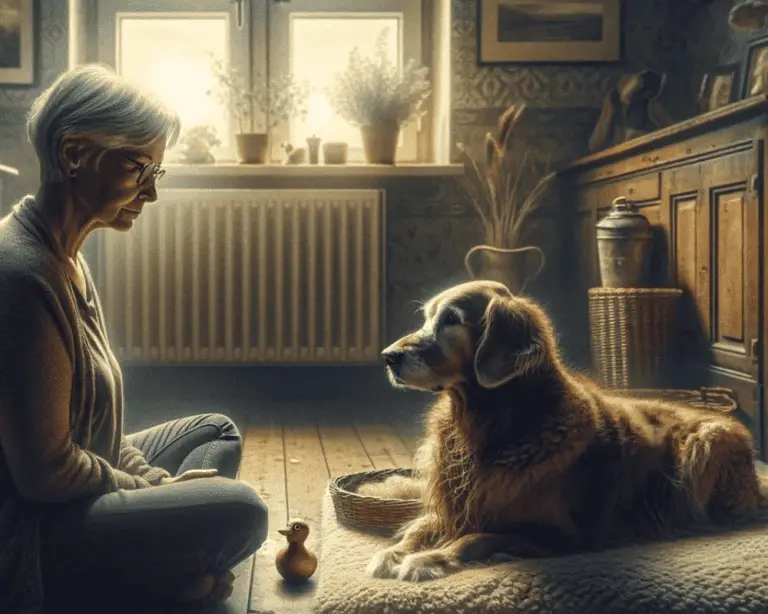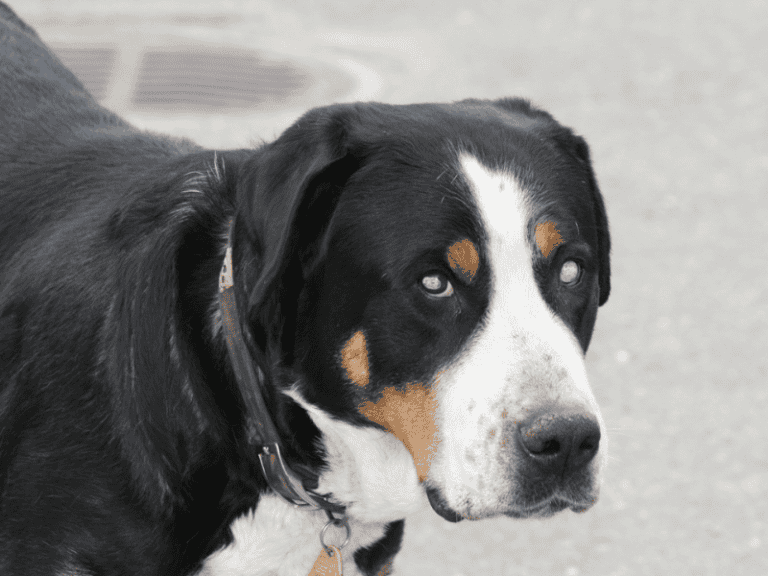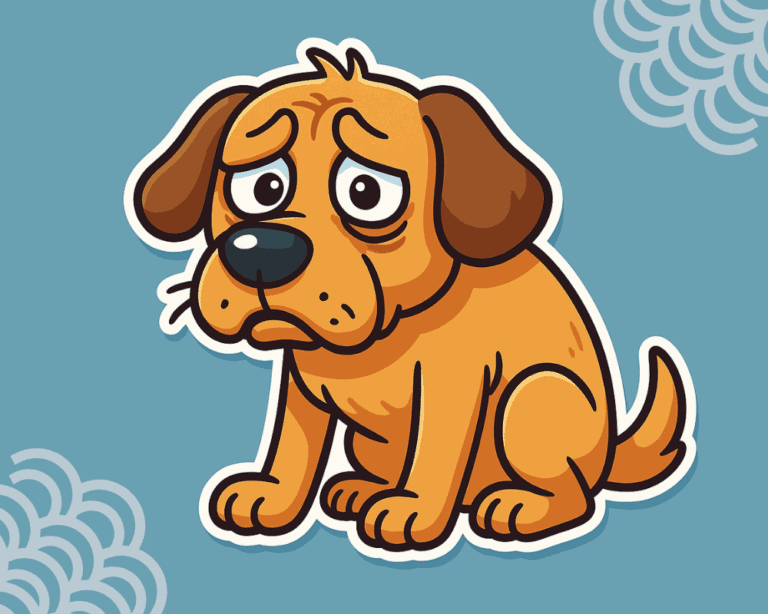Everything You Need to Know About Dementia in Senior Dogs
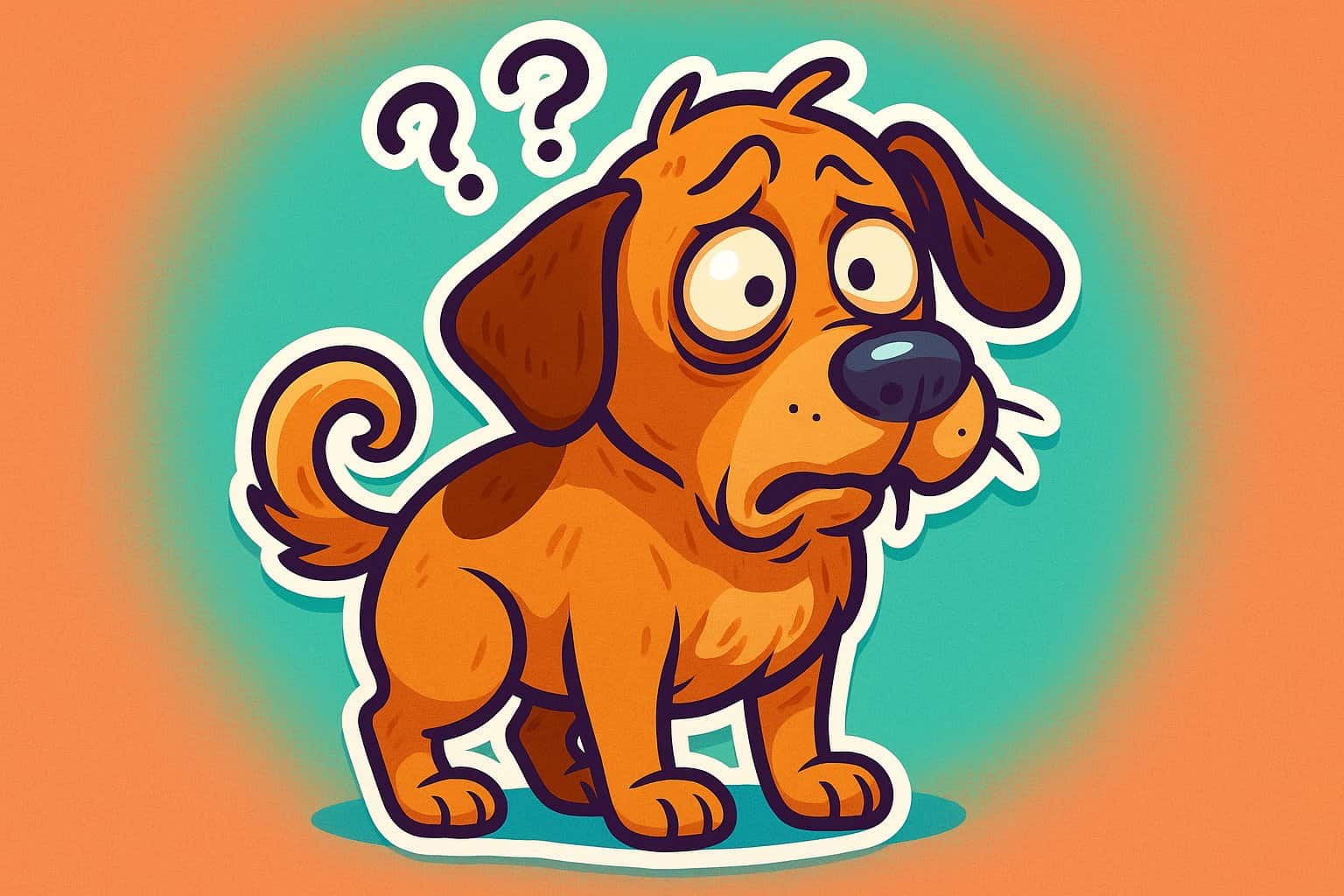
Watching your senior dog struggle with confusion or sleepless nights can feel heartbreaking. Maybe you’ve noticed your once-bright companion staring at walls or getting lost in places they’ve known for years.
Dogs can develop dementia just like humans do. This condition affects their memory, behavior, and daily functioning as they age.
If you’re wondering whether your older dog’s changes are normal aging or something more serious, you’re not alone. Dementia in senior dogs is more common than many pet parents realize, especially as our furry friends live longer thanks to better veterinary care and nutrition.
You don’t have to navigate this journey alone. There are ways to help your dog live comfortably with cognitive changes.
From recognizing early warning signs to creating supportive routines, understanding treatment options, and knowing when to seek extra help, you can make a real difference in your senior dog’s quality of life.
What Is Dementia in Senior Dogs?
Dog dementia is a real condition that affects your pet’s brain and behavior as they age. This progressive disease changes how your dog thinks, remembers, and interacts with the world.
Understanding Canine Cognitive Dysfunction
Canine Cognitive Dysfunction Syndrome, or CCD, is the official name for dog dementia. Just like Alzheimer’s in humans, it affects your dog’s brain cells and causes them to break down over time.
Your dog’s brain starts to show physical changes as this condition develops. Protein deposits build up in brain tissue, and brain cells begin to die.
These changes happen slowly, so you might not notice symptoms right away. CCD usually affects dogs over 7 years old, but larger breeds may show signs earlier since they age faster.
The condition gets worse over time and can’t be reversed. It’s kind of like your dog’s brain computer starts to glitch—files get corrupted, connections slow down, and some programs stop working.
Your dog doesn’t forget how to be a dog, but they might forget where their food bowl is or why they walked into a room.
How Dementia Differs from Typical Aging
You might wonder if your dog is just getting older or if something serious is happening. Normal aging and dementia can look similar, but there are key differences.
Normal aging brings slower movement, gray hair, and maybe some hearing loss. Your dog might sleep more or take longer to learn new things, but they’ll still recognize you and follow their routine.
Dementia goes beyond normal aging. Your dog might get lost in familiar places or forget house training they’ve known for years.
They may not recognize family members or get confused about day and night. Think of normal aging as your dog’s battery running lower, while dementia is like their operating system developing serious bugs.
If your dog occasionally seems confused but bounces back, that’s likely normal aging. If confusion becomes frequent or severe, dementia could be the reason.
Common Myths About Dog Dementia
A lot of dog owners believe myths about dementia that can prevent proper care. Let’s clear up a few misconceptions you might’ve heard.
Myth 1: Only very old dogs get dementia. Actually, dogs as young as 7 can develop early symptoms.
Myth 2: Nothing can help a dog with dementia. While there’s no cure, medications and lifestyle changes can slow progression and improve your dog’s quality of life.
Myth 3: Dogs with dementia should be put to sleep immediately. Many dogs with mild to moderate dementia live happily for months or even years with the right support.
Myth 4: Dog dementia isn’t real—dogs are just being stubborn. Dementia causes real brain changes that affect behavior.
Your dog isn’t acting difficult on purpose. They’re dealing with a real medical condition that’s changing how their brain works.
Early Warning Signs of Dementia in Old Dogs
Spotting dementia early can help you support your dog through this tough time. Changes often start small, with subtle shifts in behavior, memory issues, and different sleep patterns.
Noticing Subtle Behavior Changes
Have you noticed your senior dog acting differently? Early dementia signs can be easy to miss because they develop slowly.
Your dog might seem confused in familiar places. Maybe they stand in the wrong spot waiting for dinner or forget which door leads outside.
Common early behavior changes include:
Getting stuck in corners or behind furniture
Staring at walls or into space
Forgetting house training rules they’ve known for years
Becoming less interested in favorite toys or activities
You might also see changes in how your dog interacts with family. Some dogs get more clingy and anxious, while others withdraw and seem less interested in attention.
Watch for repetitive behaviors, too. Your dog might pace the same path over and over or bark at nothing, especially at night when confusion often gets worse.
Memory Loss and Disorientation
Does your dog sometimes look at you like they don’t recognize you? Memory problems are one of the clearest signs of canine dementia.
Your dog might forget their daily routine. They could stand at the food bowl long after eating or ask to go outside right after coming in.
Signs of memory loss include:
- Not responding to their name or familiar commands
- Forgetting where food and water bowls are
- Getting lost in your yard or home
- Not recognizing family members or friends
Disorientation often gets worse in new places. Your dog might seem completely lost at the vet’s office or a friend’s house, even if they’ve been there before.
Some dogs forget basic social skills with other pets. They might not remember how to play or could become aggressive with dogs they’ve lived with for years.
Unusual Sleeping Patterns
Is your dog keeping you up at night with restless pacing? Sleep changes are very common in dogs with dementia.
Your dog’s internal clock might get mixed up. They could sleep most of the day and then stay awake all night, pacing or whining.
Sleep-related changes you might notice:
Sleeping much more during the day
Restlessness and pacing at night
Whining or barking in the middle of the night
Seeming confused about day and night
Some dogs develop „sundown syndrome,“ where they get more anxious and confused as evening approaches. You might notice increased pacing, panting, or attention-seeking behaviors right before bedtime.
These sleep disruptions can be exhausting for everyone. If your dog is keeping the house awake, it’s time to talk with your vet about what you can do.
How Dementia Progresses in Senior Dogs
Dog dementia develops slowly over months or years. It starts with mild changes in behavior that gradually become more noticeable.
The condition typically moves through two main phases, with symptoms becoming more severe as your dog’s brain function declines.
Mild Symptoms and Early Stages
At first, you might notice small changes that are easy to blame on normal aging. Maybe your dog seems a bit more confused when you come home or stands at the wrong side of the door.
Sleep patterns often change first. Your senior dog might sleep more during the day but pace at night.
They could also start having accidents in the house, even though they’ve been housetrained for years. Social changes show up too—your once-friendly dog might seem less interested in greeting visitors or playing with other pets.
Some dogs get more clingy and follow you everywhere, while others withdraw and spend more time alone. Memory issues develop as well.
Your dog might forget routines like where their food bowl is. They may get lost in your backyard or seem confused about which door leads inside.
Learning problems can show up—commands your dog has known for years suddenly seem foreign.
Advanced Cognitive Decline
As dementia progresses, the symptoms become much more obvious and harder to manage. Your dog’s confusion increases, and they might not recognize familiar people or places.
Severe disorientation becomes a daily problem. Your dog might get stuck in corners or behind furniture and not know how to get out.
They could forget how to navigate stairs or doorways they’ve used thousands of times. Sleep disruption gets much worse.
Many dogs with advanced dementia experience „sundowning“—they become restless and anxious as evening approaches. You might find your dog wandering around all night, panting or whining.
Bathroom habits deteriorate further. Your dog may completely forget housetraining and have frequent accidents.
They might also forget to eat or drink regularly. Personality changes can become more extreme.
Some dogs develop anxiety or aggression they never showed before. Others may bark excessively at nothing or seem to stare at walls for long periods.
Main Causes and Risk Factors
Dog dementia develops from changes in your senior dog’s brain over time. Age is the biggest risk factor, but genetics and lifestyle choices throughout your dog’s life also play important roles.
Genetics and Breed Predisposition
Some dog breeds face higher risks of developing dementia as they age. If you have a purebred dog, genetics might influence whether your furry friend develops cognitive problems.
Researchers have found that certain breeds show more cases of canine cognitive dysfunction. The connection between specific breeds and dementia risk isn’t fully understood yet.
Your dog’s family history matters too. If your dog’s parents or siblings developed cognitive issues, your pet might be more likely to experience similar problems.
Mixed breed dogs often have lower risks than purebreds. This happens because mixed breeds have more genetic diversity, which can protect against inherited health problems.
The size of your dog also plays a role. Larger dogs tend to age faster than smaller ones, so they might develop dementia symptoms earlier.
Role of Lifestyle and Environment
Your dog’s lifestyle choices throughout their life directly impact their brain health as they age. Dogs that stay mentally active tend to keep their minds sharper for longer.
Mental stimulation acts like exercise for your dog’s brain. Puzzle toys, training sessions, and new experiences help build brain connections that can protect against cognitive decline.
Poor nutrition over your dog’s lifetime increases dementia risk. Dogs fed high-quality diets with proper nutrients maintain better brain health as seniors.
Physical exercise keeps blood flowing to your dog’s brain. Active dogs often show fewer signs of cognitive problems compared to couch potatoes.
Social interaction matters for your dog’s mental health. Dogs that regularly meet other dogs and people maintain better cognitive function.
Environmental enrichment throughout your dog’s life builds mental reserves. Dogs exposed to various sights, sounds, and experiences develop stronger brain networks.
Impact of Other Health Conditions
Health problems your senior dog develops can speed up cognitive decline or make dementia symptoms worse. Heart disease reduces blood flow to your dog’s brain, which affects mental function.
Diabetes damages blood vessels throughout your dog’s body, including those in the brain. This damage can contribute to cognitive problems over time.
Kidney and liver diseases affect how your dog’s body processes toxins. When these organs don’t work properly, harmful substances can build up and impact brain function.
Vision and hearing loss often happen alongside dementia in senior dogs. When your dog can’t see or hear well, they might seem more confused or disoriented.
Arthritis and joint pain limit your dog’s movement and activity levels. Less active dogs lose mental stimulation, which can worsen cognitive decline.
Chronic pain from any source stresses your dog’s body and mind. This ongoing stress can accelerate brain aging and increase dementia risk.
Getting a Diagnosis: What to Expect at the Vet
Your vet will need detailed information about your dog’s behavior changes and will run specific tests to confirm dementia. They’ll also check for other health problems that might cause similar symptoms.
First Hand Observations to Share
Your observations are the most important tool your vet has for diagnosing dementia. Dogs can’t tell us what’s wrong, so you become their voice during the appointment.
Write down specific examples before your visit. Maybe your dog has been staring at walls for hours or forgetting where the door is.
These details matter more than you might think. Note when these behaviors happen most often.
Does your dog seem more confused at night? Do they have good days and bad days?
Your vet needs this timeline to understand the pattern.
Key behaviors to track:
Getting lost in familiar places
Changes in sleep patterns
Forgetting house training
Not recognizing family members
Staring at nothing for long periods
Bring a written list to your appointment. You might forget important details when you’re nervous or rushed.
I recommend keeping a simple diary for a week before your visit.
Diagnostic Tests and Exams
Your vet will start with a complete physical exam. They’ll check your dog’s eyes, ears, and overall health.
This helps rule out pain or other problems that might affect behavior. Blood tests are usually next.
These check for liver problems, kidney disease, and thyroid issues. All of these can cause confusion that looks like dementia.
Your vet might suggest brain scans in some cases. An MRI can show brain changes, but it requires anesthesia.
Many vets skip this step if your dog is otherwise healthy.
Common diagnostic steps:
Physical examination
Blood work panel
Neurological assessment
Vision and hearing tests
Sometimes urine tests
The neurological exam checks how your dog’s brain and nerves work. Your vet will test reflexes and watch how your dog moves.
They might also test your dog’s response to commands.
Ruling Out Other Conditions
Lots of health issues can look like dementia in dogs. Your vet has to check for these first, since some are treatable and much easier to manage.
Hearing loss might make your dog seem confused or ignore you. Vision problems could be why your dog keeps bumping into furniture.
Brain tumors, infections, and liver disease can all change your dog’s behavior. Blood tests and physical exams help your vet figure out what’s really going on.
Some medications cause thinking problems, too. It’s important to mention any new drugs your dog takes.
Conditions that mimic dementia:
- Hearing or vision loss
- Brain tumors
- Liver or kidney disease
- Thyroid problems
- Side effects from medications
Your vet may want to treat other possible causes first. If your dog gets better, dementia probably wasn’t the issue.
If confusion sticks around, dementia becomes more likely. This process takes time, but it’s worth it to be thorough.
Home Care for Senior Dogs with Dementia
Caring for a dog with dementia at home means making life predictable and calm. You’ll need to tweak daily routines and create safe, comfortable spaces for your confused pup.
Managing Day-to-Day Changes
Routine becomes everything when dementia sets in. Stick to the same feeding times, walk schedule, and bedtime every day.
Feed your dog at the same times and in the same spot. Use the same food bowl and keep it in its usual place.
Short, frequent walks work better than long ones. Your dog might forget they just went out, so don’t stress if they ask again soon.
Sleep patterns often change with dementia. Your dog might nap more during the day and wander at night.
Try to keep your dog active with gentle play or short training sessions during daylight hours. If house training slips, don’t scold—just clean up and offer more potty breaks.
You might need to go back to puppy basics with frequent trips outside. Simple visual cues help—leave lights on in hallways at night so your dog can find their way.
Keep their bed, food, and water in the same spots at all times. Consistency helps them feel less lost.
Reducing Stress and Anxiety
Dogs with dementia get overwhelmed easily. Your job is to keep things calm and predictable.
Use a gentle, calm voice when you talk to your dog. They may not understand commands, so patience matters.
Limit visitors and avoid big changes. While socialization is usually great, too much activity can make confusion worse.
Stick to familiar walking routes. New parks or paths can be disorienting now.
Some dogs relax with soft classical music or calming sounds. Watch your dog—if they seem more at ease, keep it up.
Don’t rush your dog. Give them extra time to figure things out, and gently guide them if they seem stuck.
Ask your vet about anxiety wraps or calming supplements. Some dogs love the gentle pressure of a thunder shirt or benefit from natural aids.
Making Safe and Familiar Spaces
Your home needs to be a safe haven for your confused dog. Think baby-proofing, but for seniors with memory issues.
Block off stairs with baby gates if your dog struggles or forgets how to use them. Falls can cause serious injuries.
Remove or secure anything dangerous your dog might chew or get tangled in. Dogs with dementia sometimes eat or grab odd things.
Set up a cozy sleeping spot away from busy areas. Your dog needs a quiet place to rest, undisturbed.
Keep furniture in the same place. Moving chairs or tables can make your dog bump into things or get lost.
Install night lights in hallways and near your dog’s bed. Many dementia dogs wander at night and can get scared or hurt in the dark.
Baby monitors can help you keep an eye (or ear) on your dog when you can’t be there. You’ll know if they’re pacing, whining, or need help.
Make sure your yard is escape-proof. Dogs with dementia may forget where they are and try to leave through gaps they never noticed before.
Helping Your Dog Stay Happy and Engaged
Dogs with dementia still need mental and physical activities. Simple games and social contact can really boost their mood and slow decline.
Simple Activities and Games
Pick puzzle toys that match your dog’s current abilities. If they used to solve complex puzzles, switch to easier ones now.
Food-dispensing balls or treat-hiding toys work for most seniors. Try a scavenger hunt—hide a couple treats in easy spots.
Mental stimulation activities:
- Sniffing games with treats under towels
- Slow-feeder bowls to stretch out mealtime
- Short training sessions with basic commands
- Gentle tug-of-war with soft toys
Keep activities short—ten or fifteen minutes is plenty. Watch for signs of tiredness or confusion.
Introduce new smells, like basil or mint, to wake up their senses. Dap a dog-safe essential oil on a cloth and let them sniff.
Social Interaction Tips
Stick to a daily routine your dog knows. Predictable meal times and walks ease anxiety.
Invite calm, familiar people for visits. Avoid big groups or loud kids—one visitor at a time works best.
If you have other pets, keep an eye on their interactions. Sometimes another dog can help guide your senior, but sometimes they need space.
Ways to stay connected:
- Gentle brushing sessions
- Quiet time together
- Short, familiar walks
- Calm petting and massage
Talk to your dog in a soft, reassuring voice. Even if they seem confused, your voice comforts them.
If there’s a senior dog playgroup nearby, give it a try. These groups move at a slower pace and understand older dogs‘ quirks.
Medications and Supplements for Canine Dementia
A few treatments can help slow cognitive decline and improve your dog’s quality of life. Prescription meds offer proven benefits, while supplements and dietary tweaks can support brain health.
Prescription Options
Selegiline is the go-to medication for canine dementia. It boosts dopamine in the brain, helping with confusion and sleep.
Most dogs show improvement in 4-6 weeks. Some become more alert and sleep better at night.
Anipryl is another name for selegiline. Doses depend on your dog’s weight.
Side effects are usually mild—maybe some digestive upset or restlessness at first. Work with your vet to monitor how your dog responds.
Your vet will adjust the dose if needed and watch for any changes.
Dietary and Over-the-Counter Helpers
Omega-3 fatty acids support brain health and reduce inflammation. Fish oil supplements for dogs can help with cognitive function.
Coconut oil has compounds that may help brain cells use energy better. Start slow to avoid stomach upset.
Antioxidant supplements like vitamin E and turmeric protect brain cells from damage. These work best with other treatments.
SAMe (S-adenosylmethionine) helps make important brain chemicals. It often comes with other brain-supporting ingredients.
Medium-chain triglycerides (MCTs) give aging brain cells another energy source. Many senior dog foods now include these fats.
Therapeutic diets for cognitive support combine several brain-healthy ingredients. Ask your vet which option fits your dog’s needs.
Diet and Nutrition Considerations
Good nutrition supports brain health and can help manage dementia symptoms in senior dogs. The right foods slow cognitive decline and address other age-related issues.
Meal Planning for Cognitive Health
Your dog’s brain needs specific nutrients, especially with dementia. Antioxidants are key—they fight the free radicals that damage brain cells.
Look for foods rich in vitamins C and E, beta-carotene, and selenium. Blueberries, sweet potatoes, and carrots make tasty, antioxidant-rich treats.
Omega-3 fatty acids are another must-have. These healthy fats support brain cell membranes and may slow decline. Fish oil, salmon, sardines, or flaxseed all work.
Medium-chain triglycerides (MCTs) offer extra energy for aging brains. Coconut oil contains MCTs; introduce it slowly.
Feed smaller, more frequent meals to keep blood sugar stable. That helps your dog’s brain function smoothly.
Some dogs with dementia get picky or forget meal routines. Try warming their food or adding a splash of low-sodium broth to tempt them.
Supporting Other Age-Related Needs
Senior dogs with dementia often have other health issues, too. Joint health matters, since arthritis is common.
Foods with glucosamine and chondroitin support joints. Many senior dog foods include these, but you might need extra supplements.
Older dogs actually need more protein—at least 27% in their diet—to keep muscle and organ function up.
Kidney function can decline with age, so watch phosphorus levels. If your dog has kidney disease, your vet may suggest a special diet.
Digestive health can get trickier. Probiotics help maintain healthy gut bacteria, which might even boost brain health.
Monitor your dog’s weight. Extra pounds stress joints and organs, but being underweight can signal other problems.
Some seniors develop food sensitivities. If you notice digestive or skin issues, consider a limited-ingredient diet.
Daily Routines and Coping Strategies for Pet Parents
Consistent routines help dogs with dementia feel safer. Taking care of yourself matters, too—your dog needs you at your best.
Building New Habits Together
Predictable schedules help your dog feel secure. Feed them at the same times and walk familiar routes.
Use the same doors for potty breaks. If your dog gets confused, gently guide them to the right spot.
Try a calming bedtime routine:
- Dim lights 30 minutes before sleep
- Play soft music or white noise
- Put their bed in the same place every night
- Use a nightlight if they wander
If your dog’s pacing at night drives you nuts, you’re not alone. A steady evening routine can help calm that restless energy.
Daily structure that helps:
- Morning: Same wake time and potty break
- Afternoon: Gentle exercise at the usual time
- Evening: Quiet time and early dinner
If your dog forgets their food bowl location, keep it in the same spot every meal. Consistency is their anchor.
Caring for Yourself While Caring for Your Dog
Watching your dog struggle with dementia is tough. You might feel frustrated, sad, or just plain tired.
Signs you need a break:
- Getting angry at your dog’s symptoms
- Losing sleep from worry
- Avoiding social stuff
- Feeling physically exhausted
Reach out to other pet parents who get it. Online support groups for dog dementia caregivers offer advice and a place to vent.
Can you ask family or friends to help? Even a couple hours off can make a difference.
Self-care tips:
- Take short breaks during the day
- Accept that accidents will happen
- Celebrate small wins, like a peaceful night
- Ask your vet about respite care if you need it
Caring for yourself isn’t selfish. Your dog needs you healthy and steady to give them the best care.
When to Seek Additional Support
Caring for a dog with dementia can get overwhelming. You don’t have to do it all alone.
Working with Specialists
Veterinary behaviorists are invaluable when dementia symptoms get severe or dangerous. They know both animal behavior and medical brain issues.
Consider a referral if your dog becomes aggressive, extremely anxious, or doesn’t improve with basic treatments. Maybe your dog snaps at family or seems terrified of familiar places.
Behaviorists can prescribe specialized meds and create detailed behavior plans for your dog’s symptoms.
Veterinary neurologists help with tough diagnoses or if you need to rule out other brain conditions. They have access to advanced imaging like MRI scans.
Ask your vet for referrals if needed. Sometimes appointments take a few weeks, so plan ahead.
Local Community Resources
A lot of communities have support services just for senior dog owners, but they’re easy to overlook. Mobile veterinary services can really help when your confused dog gets too stressed to handle a clinic visit.
You might want to check out local pet therapy organizations. They sometimes run programs for dogs dealing with cognitive decline, and honestly, the emotional support is a comfort for both of you.
Some dog daycare centers offer senior-specific programs. Your dog gets a calm place to socialize, and you get a little breathing room.
Try reaching out to your local animal shelters or rescue groups. Volunteers there might help with dog walking or basic care if you need a break.
Online support groups are worth a look, too. Places like Facebook groups and forums are always open, and you’ll find advice and empathy from people who genuinely get what you’re going through.
Pet Hospice and End-of-Life Care
Pet hospice services focus on comfort and quality of life, not just aggressive treatment. These services matter most when your dog’s dementia makes daily life tough or even upsetting.
Hospice vets work with you to create a plan for comfort care. This plan might include pain relief, anxiety meds, or changes around the house.
They’ll come by your home now and then to check on your dog’s condition. That kind of in-person support can make a world of difference.
You might start thinking about hospice care when your dog seems more confused than comfortable. If your dog isn’t eating like usual or looks distressed more often than not, that’s another sign.
Go with your gut when it comes to your dog’s quality of life. Nobody knows your pet better than you do.
Mobile euthanasia services let your dog pass peacefully at home when it’s time. These vets focus on making the experience as gentle as possible for you and your pet.
Many pet hospice programs also offer grief counseling and support groups. Losing a dog to dementia is rough, partly because it’s such a slow, emotional process.

